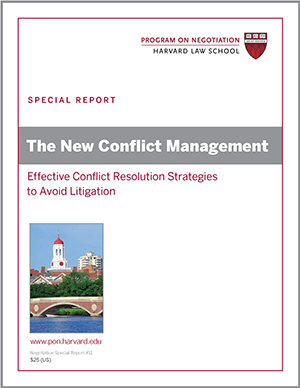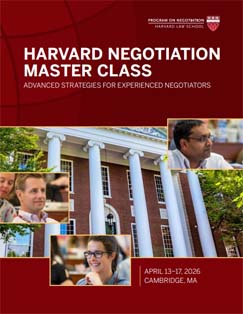
During the Covid-19 pandemic, new types of conflict arose. People would argue on Facebook or Twitter about whether stay-at-home orders had gone too far. Protestors—sometimes armed—showed up at state capitols, demanding the right to move about freely. In your own home, you might have been clashing with teens who trying to assert the same right.
Such conflicts reflect a fundamental intercultural conflict: a tension between personal liberties and societal constraint. Cultural conflicts between “loose” and “tight” cultures dates back many centuries, writes University of Maryland professor Michele Gelfand in her book Rule Makers, Rule Breakers: How Tight and Loose Cultures Wire Our World (Scribner, 2018).
By understanding the roots of the tight-loose cultural conflicts we witnessed, we can understand each other better and determine how to deal with cultural conflict more productively.
The Tight-Loose Divide
All cultures have social norms—accepted standards of behavior, from whether jaywalking and tardiness are acceptable to whether citizens should wear protective masks in public. Cultures vary in the strength of their social norms along a tight-loose continuum, with profound effects on behavior.
The degree of threat that cultures face from the outside world greater determines whether they evolve to be relatively tight or loose (or somewhere in the middle), Gelfand and her colleagues have documented in their research. Countries such as China, Malaysia, Singapore, and Pakistan have survived severe threats—from earthquakes to wars to pandemics or scarcity—by “tightening up.” Coordination and strict adherence to social norms have been keys to their survival, though they risk becoming too homogenous or authoritarian.
By comparison, cultures that have faced fewer threats have the luxury of being loose. In loose cultures such as the United States, the Netherlands, Spain, and Brazil, citizens prize their freedom, and social norms are lax. Loose cultures run on creativity and innovation, but they can be chaotic and have difficulty responding to crises that require tight coordination.
Not surprisingly, countries that “lean tight,” such as Singapore and South Korea, were successful at slowing the spread of the coronavirus through their disciplined coordination and the ready compliance of their citizens. By comparison, the U.S. government’s disorganized response to the Covid-19 pandemic and the resistance of some citizens to restrictions on their freedom garnered predictably loose responses.
When Cultural Conflicts Arise
Beyond nations, all types of cultures—from states to companies to families—tend to vary from tight to loose. Moreover, a sudden threat can lead a culture to tighten up dramatically. New York City, for example, thrives on looseness, as seen in its reputation for openness, diversity, and creativity. But as the coronavirus threatened to overwhelm the city’s hospitals, New Yorkers quickly tightened up, largely accepting restrictions on their movement. Meanwhile, areas that have been less affected by the virus, such as Florida and Wisconsin, favored looser responses, such as allowing businesses and beaches to stay open.
Tight-loose cultural conflicts even showed up within families. Those most vulnerable to the virus, including the elderly and those with underlying health vulnerabilities, may have had the “tightest” responses, venturing outside rarely and wearing masks when they did. The young and the healthy may have been more inclined to resist such limitations, believing they’re at low risk of becoming seriously ill.
“When groups with fundamentally different cultural mind-sets meet, conflict abounds,” writes Gelfand in Rule Makers, Rule Breakers. Those who lean tight accuse those who lean loose of endangering their lives. And those on the loose end accuse those who favor tightening measures of devastating the economy and curbing fundamental American values.
Strategies to Prevent Cultural Misunderstandings
Given these cultural conflicts, how can we engage in effective intercultural conflict resolution in our homes, our communities, and society at large? “Creating space for empathy can prove invaluable for combating intergroup hostility,” Gelfand writes in Rule Makers, Rule Breakers.
When cultural conflicts about adherence arise in your home, think about whether tight-loose mindsets are clashing. Where do you fall on the tight-loose continuum? While all of us are capable of tightening (think libraries) or loosening (think parties) depending on the context, we tend to have a default preference for rule making and rule breaking. To find out yours, take the TL mindset quiz.
Next, think about where others fall on the continuum and why their own experiences may have affected their own mindsets. Listen to their perspective without judgment. Share your own experience and fears, then try to negotiate solutions.
Virtual interactions can reduce cultural conflicts for those located far apart. In their research, Gelfand her collaborator Joshua Jackson tried an intervention aimed at reducing hostility between Americans and Pakistanis—members of loose and tight cultures, respectively. Students from both cultures were asked to read diary entries written by other students about their daily lives. Those who read entries by students from the other culture came to view that culture as much more similar to their own than they had previously believed, and also more positively. By taking time to read and listen to people’s stories, we can better understand their behavior.
What types of cultural conflicts did you manage to resolve effectively during the Covid-19 pandemic?




